Der ultimative Leitfaden für den Outdoor-Anbau von Autoflowering Cannabis

- 1. Einleitung
- 2. Die perfekte autoflowering-sorte wählen
- 3. Den idealen standort wählen
- 4. Bodenvorbereitung für optimales wachstum
- 5. Pflanzung und keimung
- 6. Ernährung und düngung
- 7. Bewässerungstechniken
- 8. Schädlings- und krankheitsbekämpfung
- 9. Trainingstechniken für autoflowering-cannabis
- 10. Ernte und trocknung
- 11. Vorteile des outdoor-anbaus von autoflowering-cannabis
- 12. Zusätzliche tipps für den erfolg
- 13. Die bedeutung von sonnenlicht und lichtzyklen
- 14. Expertenmeinung von jorge cervantes – co-autor:
- 15. Zusätzliche tipps für den outdoor-anbau von autoflowering cannabis
- 16. Fazit
Preface
Begib dich auf eine Reise durch die Welt des Outdoor-Cannabisanbaus mit besonderem Fokus auf Autoflowering Sorten. In diesem umfassenden Leitfaden, der von Enzo Schillaci und Jorge Cervantes mitverfasst wurde, findest du wertvolle Einblicke und detaillierte Anweisungen für Grower aller Erfahrungsstufen. Vom ersten Keimen des Samens bis zur Ernte vereint dieser Artikel wissenschaftliches Wissen und praktische Expertise, um sicherzustellen, dass deine Anbaureise mit Selbstvertrauen und Fachkenntnis gelingt.
Tauche tief in die Besonderheiten der Northern Lights Auto-Sorte ein, erfahre mehr über ihren Lebenszyklus und verstehe die entscheidende Rolle von Licht, Nährstoffen und Pflege in jeder Phase. Mit nützlichen Tipps und Expertenratschlägen wirst du von der Keimung bis zur Ernte begleitet, sodass dein Anbau sowohl ertragreich als auch lehrreich wird. Der Artikel bietet nicht nur eine Schritt-für-Schritt-Anleitung, sondern geht auch auf mögliche Herausforderungen und häufige Missverständnisse ein und sorgt so für ein umfassendes Verständnis des Anbauprozesses.
Der Outdoor-Anbau von Cannabis bringt einzigartige Herausforderungen mit sich, wie optimale Wachstumsbedingungen, Nährstoffanforderungen und Schädlingsbekämpfung. Dieser Leitfaden liefert praktische Lösungen und Alternativen, die leicht umzusetzen sind. Er entmystifiziert die Komplexität des Cannabisanbaus und teilt den Prozess in leicht verständliche Abschnitte auf, wodurch die Kunst und Wissenschaft des Anbaus für jeden zugänglich wird.
Durch diese Reise führen uns Enzo Schillaci und Jorge Cervantes. Enzo, ursprünglich aus Argentinien und aufgewachsen im Amazonasgebiet Brasiliens, bringt eine frische und aufschlussreiche Perspektive in den Leitfaden ein. Seine weltweiten Reisen und Erfahrungen, gepaart mit seiner Rolle als Vollzeit-Cannabisautor bei Fast Buds Autoflowering Genetics, verleihen dem Leitfaden einen modernen und praxisnahen Ansatz. An seiner Seite steht Jorge Cervantes, ein weltweit anerkannter Experte für den Cannabisanbau und Autor, der mit Jahrzehnten an Erfahrung und einem enormen Wissensschatz sicherstellt, dass dieser Leitfaden nicht nur informativ, sondern auch tief in der Praxis verwurzelt ist.
Einleitung
Autoflowering Cannabispflanzen revolutionieren den Outdoor-Anbau. Diese vielseitigen Pflanzen bieten hohe Erträge, hochwertige Blüten und schnelles Wachstum, was sie zur idealen Wahl für Anfänger und erfahrene Grower machen. Dieser Leitfaden enthält alle Informationen, die du benötigst, um Autoflowering Samen erfolgreich im Freien anzubauen und die bestmöglichen Ergebnisse zu erzielen.
Die perfekte Autoflowering-Sorte wählen
Der erste Schritt zum erfolgreichen Outdoor-Anbau von Autoflowering-Cannabis ist die Auswahl der idealen Sorte, die deinen Bedürfnissen und den Umweltbedingungen entspricht. Autoflowering-Sorten gibt es in verschiedenen Größen, Geschmacksrichtungen und Cannabinoid-Profilen. Folgende Faktoren solltest du bei der Auswahl deiner Sorte berücksichtigen:
- Klima-Kompatibilität: Wähle eine Sorte, die gut an dein lokales Klima angepasst ist. Einige Sorten sind widerstandsfähiger gegen Schimmel, Schädlinge und extreme Wetterbedingungen.
- Wachstumsmerkmale: Entscheide dich für eine Sorte, die eine handhabbare Größe und Wachstumsform für deinen Außenbereich hat.
- Gewünschte Wirkung: Berücksichtige das Cannabinoidprofil und die Effekte der Sorte, die du anstrebst, sei es Entspannung oder Fokussierung.
- Geschmack und Aroma: Wähle eine Sorte, deren Geschmack und Duft dir zusagen.
Beliebte Autoflowering-Sorten für den Outdoor-Anbau sind:
- Northern Lights Auto
- Amnesia Haze Auto
- Blueberry Auto
- White Widow Auto
- AK-47 Auto
Den idealen Standort wählen
Nachdem du die passende Autoflowering-Sorte ausgewählt hast, ist der nächste Schritt, den perfekten Standort für deine Cannabispflanzen zu finden. Ein geeigneter Außenbereich sollte die folgenden Voraussetzungen erfüllen:
Sonneneinstrahlung
Autoflowering-Cannabispflanzen benötigen für ein optimales Wachstum mindestens 12-16 Stunden direkte Sonneneinstrahlung pro Tag. Wähle daher einen Platz mit maximaler Sonnenausbeute über den gesamten Tag hinweg, idealerweise mit Südausrichtung, wenn du dich auf der Nordhalbkugel befindest.
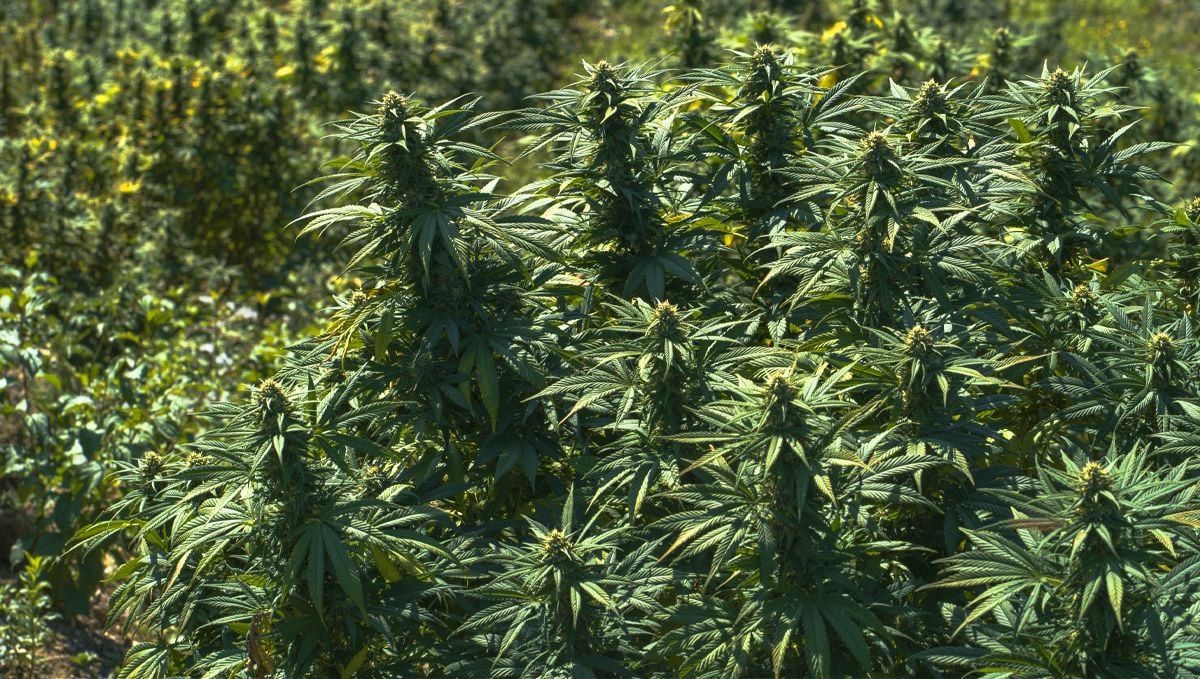
Windschutz
Starke Winde können deinen Cannabispflanzen schaden, indem sie Äste abbrechen und die Erträge mindern. Wähle daher einen Standort, der etwas Windschutz bietet, etwa hinter einem Zaun oder einer Hecke. Alternativ kannst du auch Windschutzvorrichtungen wie Gartennetze oder temporäre Barrieren verwenden, um deine Pflanzen zu schützen.
Privatsphäre und Sicherheit
Der Anbau von Cannabis im Freien kann unerwünschte Aufmerksamkeit auf sich ziehen. Suche dir einen diskreten Standort, der vor neugierigen Blicken geschützt ist und schwer zugänglich für andere ist. Du kannst Tarnungstechniken nutzen, indem du deine Pflanzen zwischen anderen hohen Pflanzen anbaust oder Sichtschutzwände aufstellst.
Bodenvorbereitung für optimales Wachstum
Ein gesunder, gut vorbereiteter Boden ist entscheidend für den erfolgreichen Anbau von Autoflowering-Cannabispflanzen im Freien. Befolge diese Schritte, um das ideale Bodenmilieu für deine Pflanzen zu schaffen:
Bodenbeschaffenheit
Cannabispflanzen gedeihen in gut durchlässigem Boden mit einem hohen Anteil an organischen Stoffen. Strebe eine Bodenmischung an, die aus folgenden Komponenten besteht:
- 40 % Torfmoos
- 10 % Kompost oder gut abgelagerter Dünger
- 20 % Perlit oder Vermiculit
- 30 % Kokosfaser
Diese Mischung gewährleistet eine gute Drainage, Nährstoffspeicherung und Belüftung.
Boden-pH-Wert
Autoflowering-Cannabispflanzen bevorzugen leicht sauren Boden mit einem pH-Wert zwischen 5,5 und 7,0. Verwende ein Boden-pH-Testkit, um den pH-Wert deines Bodens zu ermitteln. Falls nötig, passe den pH-Wert mit einer pH-Up-Lösung (zur Erhöhung des pH-Werts) oder einer pH-Down-Lösung (zur Senkung des pH-Werts) an.
Vorbereitung des Pflanzbereichs
Lockere den Boden an deinem gewählten Standort auf eine Tiefe von mindestens 30 cm. Entferne dabei Steine, Wurzeln oder andere Ablagerungen. Mische die vorbereitete Bodenmischung ein und achte darauf, dass sie gleichmäßig verteilt wird.
Pflanzung und Keimung
Autoflowering-Cannabissamen können direkt im Freien im Boden gekeimt oder zunächst drinnen vorgezogen und später umgepflanzt werden. Hier sind die Schritte für beide Methoden:
Direct Sowing
- Pflanze die Samen etwa 1,5 cm tief in den vorbereiteten Boden.
- Gieße den Boden vorsichtig, um einen guten Kontakt zwischen Samen und Erde zu gewährleisten.
- Halte die Erde feucht, bis die Keimlinge in der Regel nach 5–10 Tagen erscheinen.
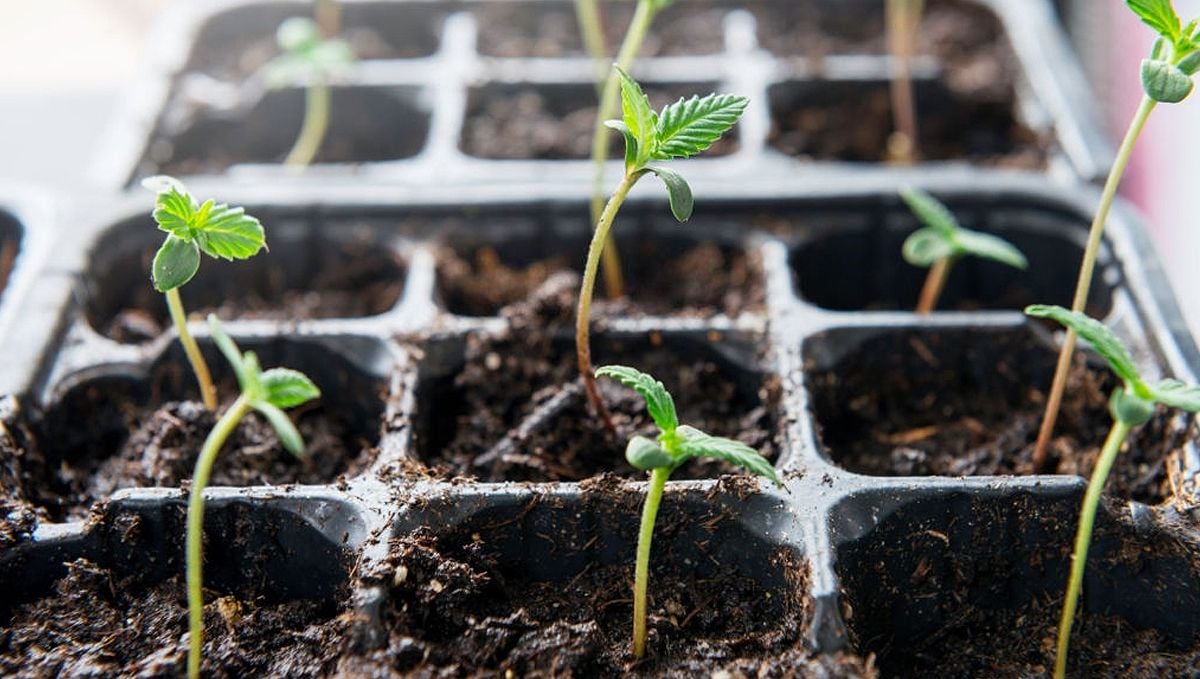
Keimung im Innenbereich und Umpflanzung
- Keime die Samen mit der „Papierhandtuch-Methode“ oder in einer Anzuchtschale mit einer Feuchtigkeitsabdeckung.
- Halte die Keimlinge 18–24 Stunden am Tag unter Licht, idealerweise mit fluoreszierenden oder LED-Wachstumslichtern.
- Sobald die Keimlinge das erste echte Blattpaar entwickelt haben, setze sie vorsichtig in den vorbereiteten Außenbereich um, ohne die Wurzeln unnötig zu stören.
Ernährung und Düngung
Eine ausgewogene Ernährung ist entscheidend für das Wachstum und die Entwicklung von Autoflowering-Cannabispflanzen. Befolge diese Richtlinien, um deine Pflanzen optimal zu versorgen:
Makronährstoffe
Cannabispflanzen benötigen hauptsächlich drei Hauptnährstoffe: Stickstoff (N), Phosphor (P) und Kalium (K). Während der Wachstumsphase solltest du einen Dünger mit einem höheren Stickstoffanteil verwenden. In der Blütephase wechsle zu einem Dünger mit einem höheren Phosphor- und Kaliumgehalt.
Mikronährstoffe
Neben den Hauptnährstoffen benötigen Cannabispflanzen auch Mikronährstoffe wie Kalzium, Magnesium, Eisen und Zink. Verwende einen ausgewogenen, speziell für Cannabis entwickelten Dünger, um sicherzustellen, dass deine Pflanzen alle notwendigen Mikronährstoffe erhalten.
Organische Düngemittel
Organische Düngemittel wie Komposttee, Fischemulsion und Fledermaus-Guano liefern wichtige Nährstoffe und verbessern gleichzeitig die Bodengesundheit. Wende organische Düngemittel gemäß den Anweisungen des Produkts an und passe die Dosierung je nach den Bedürfnissen deiner Pflanzen an.
Überwachung der Nährstoffwerte
Beobachte deine Pflanzen genau auf Anzeichen von Nährstoffmängeln oder -überschüssen. Gelbe Blätter, langsames Wachstum und schwache Stängel können auf Nährstoffungleichgewichte hinweisen. Passe dein Düngeschema entsprechend an, um diese Probleme zu beheben.
Bewässerungstechniken
Die richtige Bewässerung ist entscheidend für die Gesundheit und Produktivität deiner Autoflowering-Cannabispflanzen. Sowohl Über- als auch Unterbewässerung können Probleme wie Wurzelfäule oder Nährstoffblockaden verursachen. Mit diesen Tipps gelingt dir die Bewässerung optimal:
- Gieße tief und in größeren Abständen, um das Wurzelwachstum zu fördern.
- Verwende den „Finger-Test“, um die Bodenfeuchtigkeit zu prüfen: Stecke deinen Finger etwa 2–3 cm in die Erde. Fühlt sich der Boden trocken an, ist es Zeit zu gießen. Ist er noch feucht, warte ein bis zwei Tage.
- Gieße früh am Morgen oder spät am Abend, um Verdunstung zu minimieren und das Risiko von Schimmelbildung zu verringern.
- Vermeide es, Wasser auf die Blätter und Blüten zu sprühen, da dies Schimmel begünstigen kann.
- Erwäge den Einsatz von Tropfbewässerung oder Perlschläuchen, um das Wasser direkt an die Wurzeln zu leiten und so Verdunstung und Abfluss zu minimieren.
Schädlings- und Krankheitsbekämpfung
Outdoor-Cannabispflanzen können anfällig für verschiedene Schädlinge und Krankheiten sein. Schütze deine Pflanzen mit folgenden vorbeugenden Maßnahmen und Bekämpfungsmethoden:
Vorbeugende Maßnahmen
- Untersuche deine Pflanzen regelmäßig auf Anzeichen von Schädlingen und Krankheiten.
- Halte den Anbaubereich sauber und ordentlich. Entferne abgestorbene Blätter, Unkraut und Ablagerungen.
- Fördere nützliche Insekten wie Marienkäfer und Florfliegen, indem du Begleitpflanzen wie Ringelblumen, Schafgarbe oder Dill anbaust.
- Installiere physische Barrieren wie Gartennetze, um größere Schädlinge wie Vögel und Nagetiere fernzuhalten.
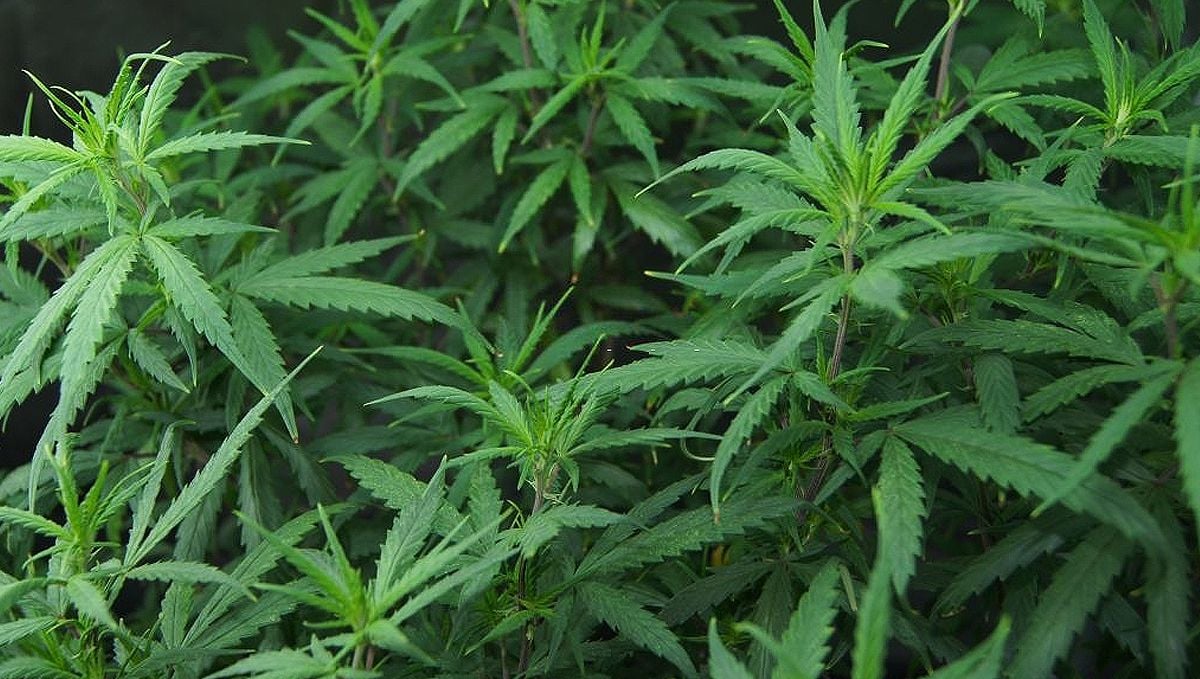
Pest Control
- Entferne Schädlinge per Hand oder mit einem kräftigen Wasserstrahl.
- Trage bei Bedarf natürliche Insektizide wie Neemöl, Kieselgur oder insektizide Seife auf.
- Setze Nützlinge wie Raubmilben ein, um Schädlingspopulationen unter Kontrolle zu halten.
Krankheitsbekämpfung
- Schneide die unteren Äste und Blätter zurück, um die Luftzirkulation zu verbessern und die Feuchtigkeit rund um die Pflanzen zu reduzieren.
- Verwende organische Fungizide wie kupferhaltige Sprays, Kaliumbicarbonat oder Trichoderma, um Pilzinfektionen zu behandeln und vorzubeugen.
Trainingstechniken für Autoflowering-Cannabis
Trainingstechniken können die Gesundheit, Struktur und Erträge deiner Autoflowering-Cannabispflanzen verbessern. Da diese Pflanzen eine kürzere Wachstumsphase haben, ist es wichtig, stressarme Methoden (Low-Stress-Training, LST) anzuwenden, die keinen großen Schaden oder Stress verursachen. Hier sind einige beliebte LST-Techniken für Autoflowering-Cannabis:
- Biegen und Fixieren: Biege die Zweige vorsichtig und fixiere sie, um ein gleichmäßiges Blätterdach zu schaffen, das eine bessere Lichtdurchdringung und -verteilung ermöglicht. Diese Methode wird als Low-Stress-Training (LST) bezeichnet.
- Screen of Green (ScrOG): Installiere ein horizontales Netz oder Gitter über deinen Pflanzen und führe die wachsenden Zweige durch das Netz, um ein flaches, gleichmäßiges Blätterdach zu formen. Diese Methode verbessert die Lichtverteilung und die Blütenproduktion.
Ernte und Trocknung
Die richtige Ernte- und Trocknungstechnik ist entscheidend, um die Potenz, den Geschmack und das Aroma deiner Autoflowering-Cannabisblüten zu bewahren. Befolge diese Schritte für die besten Ergebnisse:
Ernte
- Überwache die Trichome deiner Blüten mit einer Lupe oder einem Juweliermikroskop. Ernte, wenn die meisten Trichome trüb sind und einige sich bernsteinfarben färben.
- Schneide die Äste der Pflanze ab und entferne große Fächerblätter.
- Trimme kleinere Blätter ab, wobei du darauf achten solltest, die mit Trichomen bedeckten „Zuckerblätter“ zu erhalten.
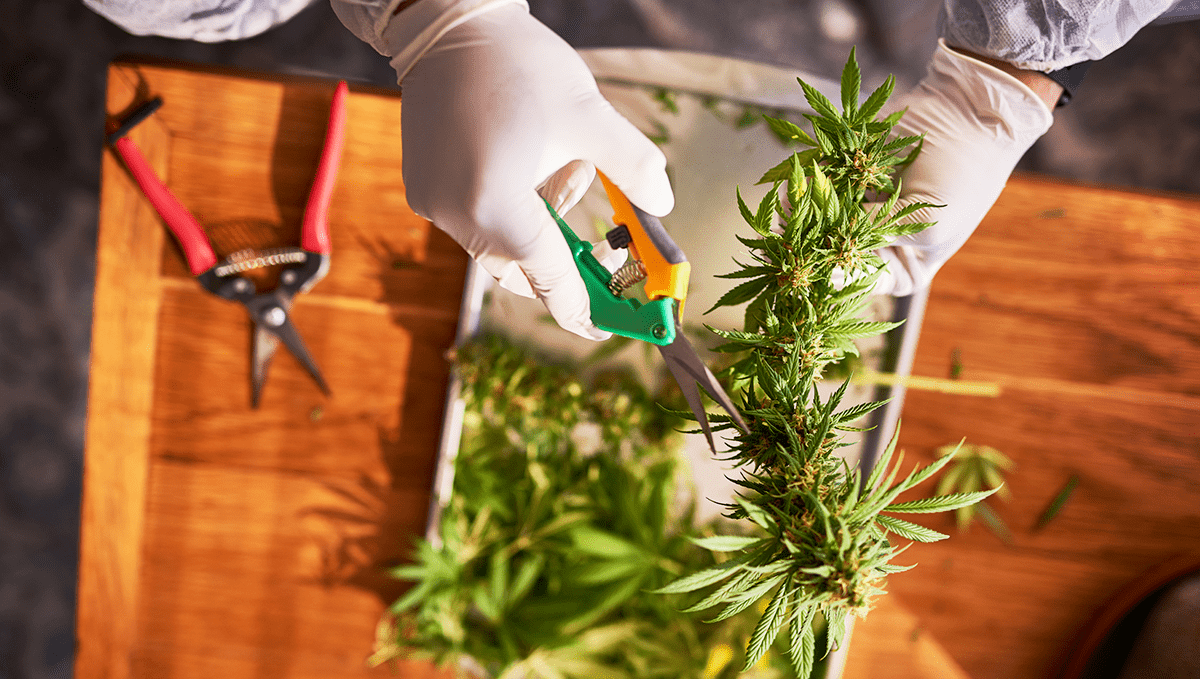
Trocknung
- Hänge die getrimmten Äste kopfüber in einem dunklen, gut belüfteten Raum bei einer Temperatur von 15–21 °C und einer Luftfeuchtigkeit von 55 bis 65 % auf.
- Lasse die Blüten 7–14 Tage trocknen und kontrolliere regelmäßig auf Schimmel oder Mehltau.
- Die Blüten sind bereit für das Aushärten, wenn die Äste beim Biegen brechen und nicht mehr elastisch sind.
Aushärten
- Entferne die Blüten vorsichtig von den Ästen und lege sie in luftdichte Glasbehälter. Fülle die Gläser etwa zu ⅔ bis ¾, um die Luftzirkulation zu gewährleisten.
- Lagere die Gläser an einem kühlen, dunklen Ort, wie einem Schrank oder einer Vorratskammer.
- Öffne die Gläser täglich in der ersten Woche, um sie zu „lüften“, damit frische Luft hineingelangt und überschüssige Feuchtigkeit entweichen kann. Das verhindert Schimmelbildung.
- Nach der ersten Woche lüfte die Gläser alle paar Tage für die nächsten 2–3 Wochen.
- Lasse die Blüten mindestens 4 Wochen aushärten; längere Aushärtezeiten können den Geschmack und die Potenz verbessern.
Vorteile des Outdoor-Anbaus von Autoflowering-Cannabis
Der Anbau von Autoflowering-Cannabis im Freien bietet im Vergleich zum Indoor-Anbau zahlreiche Vorteile:
- Geringere Kosten: Der Outdoor-Anbau erfordert weniger Ressourcen und Ausrüstung, wie z. B. Beleuchtung und Belüftungssysteme, was die Kosten senkt.
- Natürliches Sonnenlicht: Sonnenlicht bietet ein vollständiges Lichtspektrum, das das Wachstum fördert und höhere Erträge ermöglicht.
- Größere Pflanzen: Im Freien können die Pflanzen höher und breiter wachsen als in Innenräumen, was zu größeren Erträgen führt.
- Umweltvorteile: Der Outdoor-Anbau hat einen geringeren CO₂-Fußabdruck im Vergleich zum Indoor-Anbau.
- Weniger Pflegeaufwand: Outdoor-Pflanzen benötigen im Allgemeinen weniger tägliche Pflege und Aufmerksamkeit als Indoor-Pflanzen.
- Natürliche Schädlingsbekämpfung: Outdoor-Gärten ziehen oft nützliche Insekten wie Marienkäfer an, die helfen, Schädlinge zu bekämpfen.
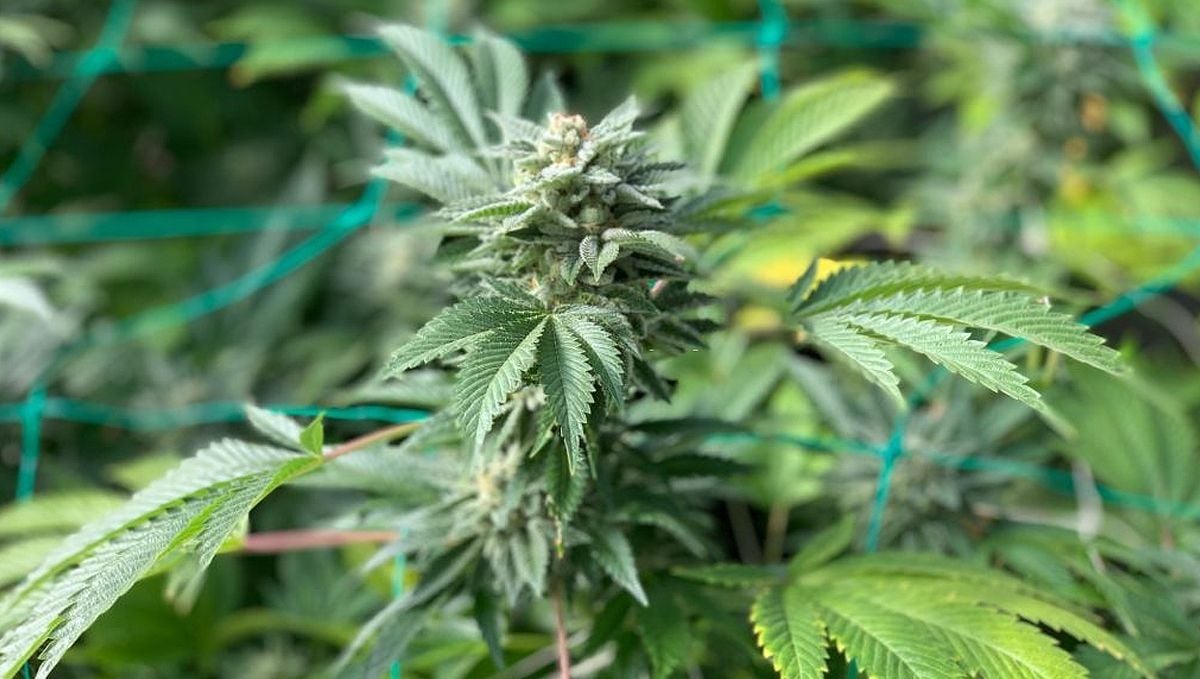
Zusätzliche Tipps für den Erfolg
To further enhance your outdoor autoflowering cannabis growing experience, consider these additional tips:
- Pflanze in aufeinanderfolgenden Intervallen: Um eine kontinuierliche Ernte während der Wachstumsperiode zu gewährleisten, pflanze in Abständen von 2 bis 3 Wochen. So hast du stets frische Blüten, die zu verschiedenen Zeiten erntereif sind.
- Beobachte die Wetterbedingungen: Achte auf die lokale Wettervorhersage und sei darauf vorbereitet, deine Pflanzen vor extremen Bedingungen wie starkem Regen, Hagel oder Frost zu schützen. Verwende temporäre Schutzvorrichtungen oder bringe die Pflanzen bei Bedarf ins Haus.
- Führe ein Anbautagebuch: Dokumentiere den Anbauprozess, einschließlich Pflanzdaten, Sorteninformationen, Düngeplänen und aufgetretenen Problemen. Das hilft dir, aus jeder Anbausaison zu lernen und deine Techniken zu verbessern.
- Investiere in hochwertige Genetik: Wähle Samen von renommierten Züchtern und Samenbanken, um sicherzustellen, dass du qualitativ hochwertige, sortenreine Autoflowering-Cannabispflanzen anbaust.
- Experimentiere mit verschiedenen Sorten: Jede Autoflowering-Sorte hat einzigartige Eigenschaften, Wachstumsformen und Effekte. Probiere verschiedene Sorten aus, um diejenigen zu finden, die am besten zu deinen Anbaubedingungen und Vorlieben passen.
- Bleibe informiert und vernetzt: Trete Online-Foren bei, besuche lokale Grower-Treffen und bleibe über die neuesten Entwicklungen im Cannabisanbau auf dem Laufenden, um deine Fähigkeiten und dein Wissen kontinuierlich zu erweitern.
Durch die Integration dieser zusätzlichen Tipps und Strategien in deinen Outdoor-Anbau von Autoflowering-Cannabis bist du bestens gerüstet, um Herausforderungen zu meistern und stets erfolgreiche Ergebnisse zu erzielen.
Die richtige Autoflowering-Sorte wählen
Die Auswahl der passenden Autoflowering-Cannabissorte für deinen Outdoor-Garten ist entscheidend für den Erfolg und das Erreichen der gewünschten Ergebnisse. Berücksichtige bei der Auswahl einer Sorte folgende Faktoren:
- Klimaanpassung: Wähle Sorten, die an dein lokales Klima und Wetterbedingungen angepasst sind. Einige Sorten sind widerstandsfähiger gegenüber rauen Umgebungen, während andere in milderen Bedingungen gedeihen.
- Anbauschwierigkeit: Wähle Sorten, die deinem Erfahrungsniveau entsprechen. Einige Sorten sind leichter anzubauen und daher ideal für Anfänger.
- Ertragspotenzial: Unterschiedliche Sorten liefern unterschiedliche Erträge. Berücksichtige bei der Auswahl einer Sorte die potenzielle Erntemenge in Bezug auf deinen Platz und deine Ziele.
- Blütephase: Obwohl Autoflowering-Sorten kürzere Blütezeiten haben als photoperiodische Pflanzen, gibt es immer noch Unterschiede. Wähle eine Sorte mit einer Blütezeit, die zu deinen Zielen und deinem Zeitplan passt.
- Gewünschte Wirkung: Cannabissorten können unterschiedliche Wirkungen hervorrufen, wie Entspannung, Euphorie oder Schmerzlinderung. Wähle eine Sorte, die deinen persönlichen Vorlieben und gewünschten Effekten entspricht.
- Aroma und Geschmack: Cannabissorten können vielfältige Aromen und Geschmacksrichtungen haben, von fruchtig und süß bis erdig und würzig. Wähle eine Sorte, die deinem Geschmack und Geruchssinn entspricht.
- Cannabinoidgehalt: Unterschiedliche Sorten können variierende Gehalte an THC, CBD und anderen Cannabinoiden haben. Wähle eine Sorte mit einem Cannabinoidprofil, das deinen Bedürfnissen und Vorlieben entspricht.
Den idealen Standort für den Outdoor-Cannabisanbau wählen
Die Wahl des richtigen Standorts für deinen Outdoor-Cannabisgarten ist entscheidend für optimales Pflanzenwachstum und hohe Erträge. Berücksichtige bei der Auswahl eines Standorts folgende Faktoren:
- Sonnenlicht: Cannabispflanzen benötigen mindestens 6-8 Stunden direktes Sonnenlicht pro Tag, um gesund zu wachsen. Wähle einen Standort mit reichlich Sonnenlicht, idealerweise mit Südausrichtung.
- Privatsphäre: Wähle einen diskreten Standort, der vor neugierigen Blicken geschützt und schwer zugänglich ist, um die Sicherheit deiner Pflanzen zu gewährleisten.
- Windschutz: Schütze deine Pflanzen vor starken Winden, indem du einen Standort mit natürlichen Windschutzwällen wie Bäumen, Sträuchern oder Zäunen wählst.
- Wasserversorgung: Dein Garten sollte sich in der Nähe einer Wasserquelle befinden, um das Gießen zu erleichtern.
- Entwässerung: Eine gute Drainage ist wichtig für eine gesunde Wurzelentwicklung. Vermeide Standorte, die anfällig für Überschwemmungen oder stehendes Wasser sind.
- Platz für Wachstum: Berücksichtige die Endgröße deiner Cannabispflanzen und stelle sicher, dass genügend Platz für ihr Wachstum vorhanden ist.
Bodenvorbereitung für Autoflowering-Cannabispflanzen
Gesunder Boden ist entscheidend für optimales Pflanzenwachstum. Befolge diese Schritte, um den Boden für deinen Outdoor-Autoflowering-Cannabisgarten vorzubereiten:
- Den richtigen Bodentyp wählen: Cannabispflanzen gedeihen am besten in gut durchlässigem, sandig-lehmigem Boden mit einem leicht sauren pH-Wert von 6,0 bis 7,0. Du kannst vorgemischte, speziell für Cannabis entwickelte Erden kaufen oder deine eigene Mischung herstellen, indem du Zutaten wie Torfmoos, Kokosfaser, Perlit und Vermiculit verwendest.
- Boden-pH-Wert testen: Verwende ein Boden-pH-Testkit, um den pH-Wert deines Bodens zu messen. Falls nötig, passe den pH-Wert mit Kalk (zur Erhöhung des pH-Werts) oder Schwefel (zur Senkung des pH-Werts) an, um den optimalen Bereich zu erreichen.
- Den Boden anreichern: Füge organisches Material wie Kompost, abgelagerten Dünger oder Wurmhumus hinzu, um die Bodenstruktur, die Wasserspeicherung und die Verfügbarkeit von Nährstoffen zu verbessern.
- Langzeitdünger einarbeiten: Mische organische Langzeitdünger wie Knochenmehl, Blutmehl oder Seetangmehl in den Boden ein, um über die gesamte Wachstumsperiode hinweg essenzielle Nährstoffe bereitzustellen.
- Pflanzlöcher oder Hochbeete vorbereiten: Grabe Pflanzlöcher oder errichte Hochbeete, um genügend Platz für die Wurzelentwicklung zu schaffen und die Drainage zu verbessern. Ergänze jedes Pflanzloch oder Hochbeet mit zusätzlichem organischem Material und Langzeitdüngern.
- Stützstrukturen installieren: Falls erforderlich, installiere Stützstrukturen wie Stäbe oder Spaliere bereits beim Pflanzen, um spätere Störungen des Wurzelsystems zu minimieren.
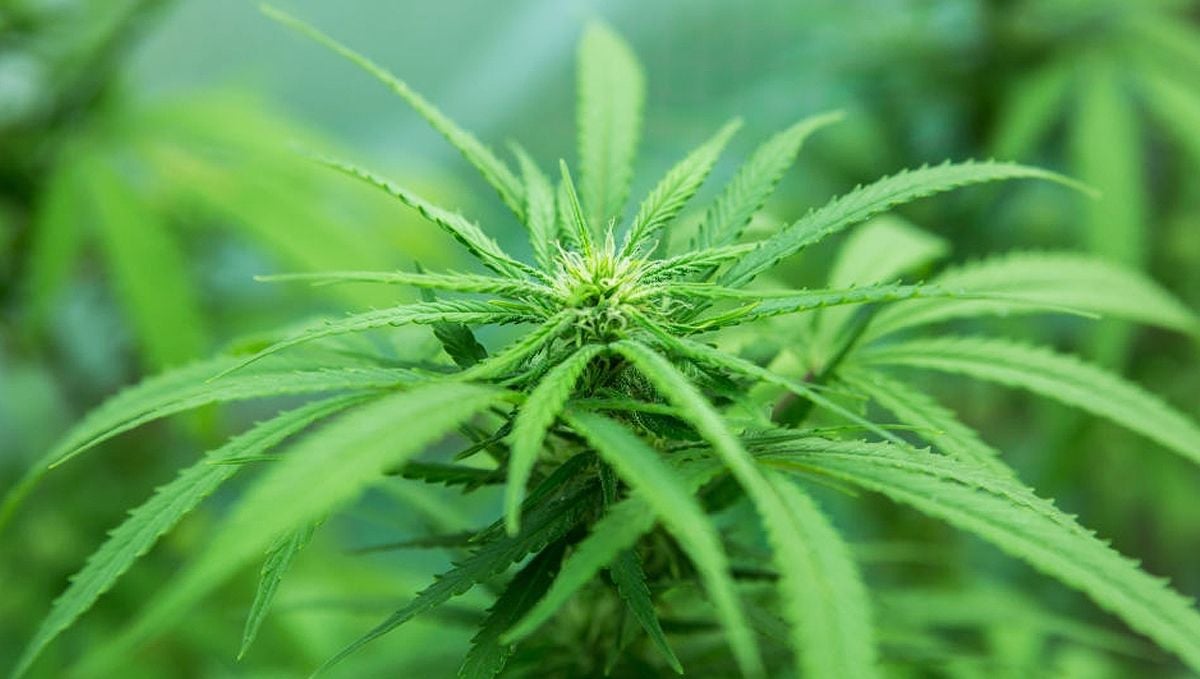
Pflanzung und Keimung von Autoflowering-Cannabissamen
Die richtigen Pflanz- und Keimungstechniken sind essenziell für den erfolgreichen Cannabisanbau. Befolge diese Schritte, um Autoflowering-Cannabissamen zu pflanzen und zu keimen:
- Samen einweichen: Weiche die Samen 12–24 Stunden in Wasser ein, um die Samenhülle zu erweichen und die Keimung zu fördern.
- Samen direkt in die Erde pflanzen: Setze die Samen direkt an ihren endgültigen Standort, um Umpflanzungsschocks zu vermeiden. Pflanze die Samen 0,6-1,2 cm tief ein und bedecke sie leicht mit Erde. Gieße sanft, um die Erde anzufeuchten.
- Optimale Umgebungsbedingungen aufrechterhalten: Halte die Erde gleichmäßig feucht und sorge für eine Temperatur von 20–25 °C für optimale Keimung.
- Keimlinge überwachen: Die Keimlinge sollten innerhalb von 3–10 Tagen erscheinen. Stelle sicher, dass sie ausreichend Sonnenlicht erhalten und die Temperatur- und Feuchtigkeitsbedingungen stimmen.
Ernährung und Düngung für Autoflowering-Cannabis
Die richtige Ernährung und Düngung ist entscheidend für das gesunde Wachstum und die Entwicklung von Autoflowering-Cannabispflanzen. Befolge diese Richtlinien zur Nährstoffversorgung:
- Nährstoffbedarf verstehen: Cannabispflanzen benötigen Makronährstoffe (Stickstoff, Phosphor und Kalium) und Mikronährstoffe (Kalzium, Magnesium und Schwefel) für optimales Wachstum. In der Wachstumsphase benötigen die Pflanzen höhere Stickstoffmengen, während in der Blütephase mehr Phosphor und Kalium gefragt sind.
- Den richtigen Dünger wählen: Wähle organische oder synthetische Düngemittel, die speziell für den Cannabisanbau entwickelt wurden. Achte darauf, dass der gewählte Dünger den Nährstoffbedarf jeder Wachstumsphase deckt.
- Empfohlene Düngeschemata befolgen: Hersteller von Düngemitteln bieten in der Regel Fütterungsschemata an, die optimale Nährstoffverhältnisse und Anwendungshäufigkeiten für jede Wachstumsphase festlegen. Passe die Dosierung bei Bedarf an die spezifischen Bedürfnisse deiner Pflanzen an.
- Nährstoffwerte überwachen: Teste regelmäßig die Nährstoffwerte des Bodens mit einem Testkit, um sicherzustellen, dass deine Pflanzen ausreichend versorgt sind. Passe die Düngeranwendung entsprechend an.
- Auf Nährstoffmängel oder -überschüsse achten: Beobachte deine Pflanzen auf Anzeichen von Nährstoffmängeln oder -überschüssen, wie vergilbte Blätter, gehemmtes Wachstum oder eingerollte Blätter, und passe dein Düngeschema bei Bedarf an.
Bewässerungstechniken für Outdoor-Autoflowering-Cannabis
Die richtige Bewässerung ist essenziell für das gesunde Wachstum von Cannabispflanzen. Nutze diese Tipps zur Bewässerung von Autoflowering-Cannabispflanzen im Freien:
- Tief und selten gießen: Gieße deine Pflanzen gründlich, sodass die Feuchtigkeit bis zur Wurzelzone gelangt. Dies fördert eine tiefere Wurzelentwicklung und verbessert die allgemeine Pflanzengesundheit. Lasse die oberen Zentimeter der Erde zwischen den Bewässerungen austrocknen, um Überwässerung und Wurzelfäule zu vermeiden.
- Das richtige Bewässerungsgerät verwenden: Verwende eine Gießkanne, einen Gartenschlauch oder ein Tropfbewässerungssystem, um deine Pflanzen sanft und gleichmäßig zu bewässern. Vermeide Hochdrucksprüher, die die Pflanzen beschädigen und die Erde abtragen können.
- Früh am Tag gießen: Gieße früh am Tag, damit das Laub vor Einbruch der Nacht trocknen kann. Dies verringert das Risiko von Schimmel und Mehltau.
- Bewässerungshäufigkeit anpassen: Überwache das Wetter und die Bodenfeuchtigkeit, um die richtige Bewässerungshäufigkeit festzulegen. In heißen, trockenen Bedingungen musst du möglicherweise häufiger gießen, während du in kühleren, feuchteren Bedingungen seltener gießen solltest.
- Mulch verwenden: Trage eine Schicht organischen Mulchs wie Stroh oder Holzspäne um deine Pflanzen auf, um die Feuchtigkeit zu speichern, die Bodentemperatur zu regulieren und Unkraut zu unterdrücken.
Schädlings- und Krankheitsbekämpfung bei Outdoor-Cannabispflanzen
Der Schutz deines Outdoor-Cannabisgartens vor Schädlingen und Krankheiten ist entscheidend für eine erfolgreiche Ernte. Hier sind Strategien zur Schädlings- und Krankheitsbekämpfung:
- Gartenhygiene beachten: Halte deinen Garten sauber und frei von Ablagerungen, um das Risiko von Schädlingen und Krankheiten zu reduzieren. Entferne regelmäßig tote Blätter, Zweige und Unkraut.
- Pflanzen regelmäßig inspizieren: Untersuche deine Pflanzen regelmäßig auf Anzeichen von Schädlingen und Krankheiten. Frühe Erkennung und Eingreifen können verhindern, dass kleine Probleme zu großen werden.
- Integrierte Schädlingsbekämpfung (IPM) anwenden: Setze IPM-Strategien wie biologische Schädlingsbekämpfung, kulturelle Praktiken und physische Barrieren ein, um den Einsatz chemischer Pestizide zu minimieren.
- Nützliche Insekten einführen: Setze nützliche Insekten wie Marienkäfer und Raubmilben ein, um Schädlinge auf natürliche Weise zu kontrollieren.
- Organische Pestizide und Fungizide verwenden: Setze bei Bedarf organische Pestizide und Fungizide ein, um Schädlinge und Krankheiten zu bekämpfen. Wende diese Produkte gemäß den Herstellerempfehlungen an und vermeide das Sprühen bei heißem, sonnigem Wetter, um Schäden an den Pflanzen zu verhindern.
- Fruchtwechsel und Mischkultur anwenden: Nutze Fruchtwechsel und Mischkultur, um Schädlings- und Krankheitszyklen zu unterbrechen und die allgemeine Pflanzengesundheit zu fördern.
Trainingstechniken für Autoflowering-Cannabis
Trainingstechniken können die Struktur, den Ertrag und die Gesundheit deiner Autoflowering-Cannabispflanzen verbessern. Hier sind einige Methoden:
- Low-Stress-Training (LST): LST beinhaltet das sanfte Biegen und Fixieren von Zweigen, um ein gleichmäßiges Blätterdach zu schaffen und die Lichtausbeute zu maximieren. Diese Technik kann die Erträge steigern, ohne die Pflanze stark zu belasten.
- Topping: Topping wird bei Autoflowering-Pflanzen aufgrund ihrer kurzen Lebensdauer generell nicht empfohlen, kann jedoch in bestimmten Fällen vorsichtig angewendet werden. Dabei wird der Hauptwachstumspunkt entfernt, um seitliches Wachstum zu fördern und eine buschigere Struktur zu erzeugen.
- Beschneiden und Entlauben: Entferne die unteren Äste, um die Luftzirkulation und die Lichtdurchdringung zu verbessern. Sei vorsichtig, um nicht zu viel zu beschneiden, da dies die Pflanze stressen und die Erträge verringern kann.
Ernte und Trocknung von Autoflowering-Cannabisblüten
Die richtige Ernte- und Trocknungstechnik ist entscheidend, um die Potenz, den Geschmack und das Aroma deiner Cannabisblüten zu bewahren. Befolge diese Schritte für eine optimale Ernte und Trocknung:
- Den optimalen Erntezeitpunkt bestimmen: Überwache die Trichome und Blütenstempel, um den idealen Erntezeitpunkt festzulegen. Die Trichome sollten milchig-weiß mit etwas Bernstein sein, und die meisten Blütenstempel sollten dunkel und gekräuselt sein.
- Pflanzen ernten: Schneide die Zweige mit sauberen, scharfen Scheren oder Gartenscheren vom Hauptstamm ab und entferne die großen Fächerblätter.
- Blüten trimmen: Trimme die Blüten vorsichtig, um überschüssige Blätter und Stängel zu entfernen. Du kannst entweder nass trimmen (direkt nach der Ernte) oder trocken trimmen (nachdem die Blüten teilweise getrocknet sind).
- Blüten trocknen: Hänge die getrimmten Zweige in einem gut belüfteten, dunklen Raum bei einer Temperatur von 15–21 °C und einer relativen Luftfeuchtigkeit von 45 bis 55 % auf. Die Blüten sollten 7–14 Tage trocknen, bis die Stängel beim Biegen brechen.
- Blüten aushärten: Entferne die getrockneten Blüten von den Zweigen und lege sie in luftdichte Glasbehälter, die etwa zu ¾ gefüllt sind. Bewahre die Gläser an einem kühlen, dunklen Ort auf. In der ersten Woche täglich für 10-15 Minuten öffnen, um Feuchtigkeit freizulassen und frische Luft hineinzulassen. Nach der ersten Woche die Gläser ein- bis zweimal pro Woche öffnen. Die Blüten sollten mindestens 4-6 Wochen aushärten, um den vollen Geschmack und das Aroma zu entwickeln. Für beste Ergebnisse kann eine Aushärtung von 2-3 Monaten angestrebt werden.
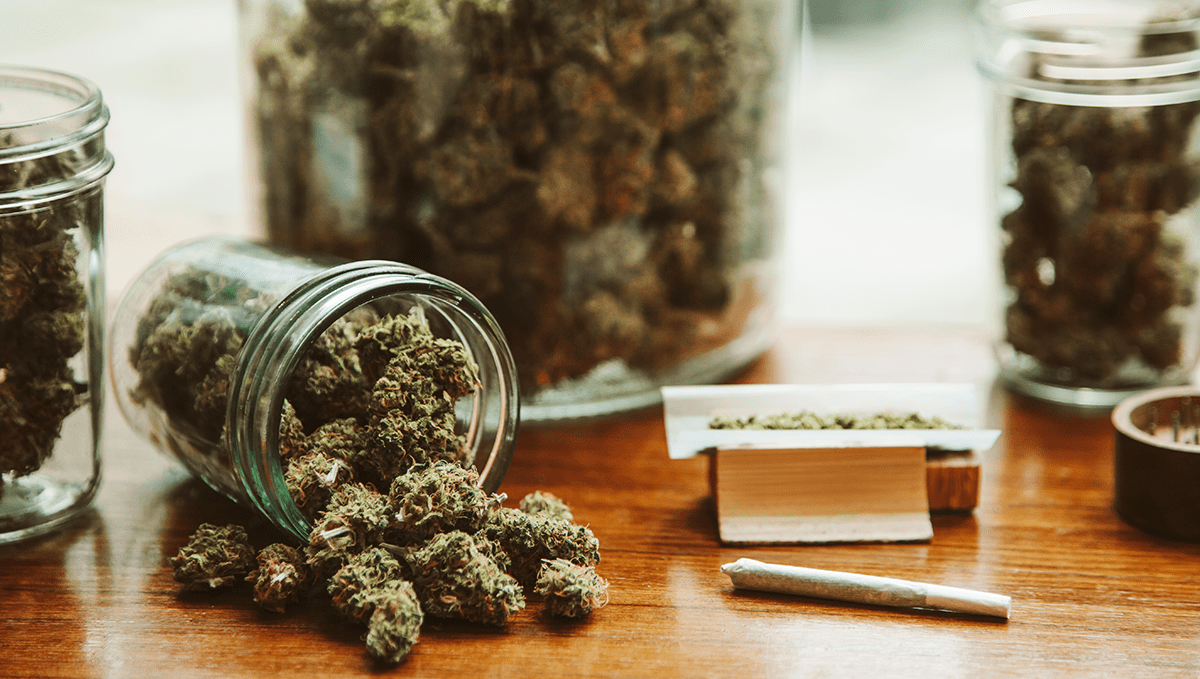
Die Bedeutung von Sonnenlicht und Lichtzyklen
Sonnenlicht spielt eine entscheidende Rolle für das Wachstum und die Entwicklung von Cannabispflanzen. Das Lichtspektrum und die Dauer der Tageslichtstunden beeinflussen wichtige pflanzliche Prozesse wie die Fotosynthese, das vegetative Wachstum und die Blüte:
- Fotosynthese: Cannabispflanzen nutzen Sonnenlicht, um Energie durch Fotosynthese zu produzieren. Vollspektrum-Sonnenlicht bietet das optimale Wellenlängenspektrum für eine effiziente Fotosynthese und kräftiges Wachstum.
- Vegetatives Wachstum: Während der Wachstumsphase benötigen Cannabispflanzen lange Tageslichtstunden, um kräftiges Wachstum zu fördern. Outdoor-Pflanzen profitieren im Frühling und Sommer von den zunehmenden Tageslichtstunden.
- Blüte: Im Gegensatz zu photoperiodischen Cannabispflanzen benötigen Autoflowering-Sorten keine Veränderung der Tageslichtstunden, um die Blüte einzuleiten. Stattdessen wechseln sie automatisch nach etwa 4-5 Wochen Wachstum in die Blütephase. Diese Eigenschaft ermöglicht mehrere Ernten in einer Anbausaison.
Expertenmeinung von Jorge Cervantes – Co-Autor:
Den Anbau von autoflowering Cannabis im Freien zu beginnen, ist eine Reise voller kontinuierlicher Lernprozesse und Entdeckungen, und dieser Artikel, den ich zusammen mit Enzo Schillaci verfasst habe, ist ein entscheidender Leitfaden auf dieser Erkundung. Mit über 40 Jahren Erfahrung im Cannabisanbau habe ich die Entwicklung der Anbautechniken miterlebt und beobachtet, wie Autoflowering-Sorten aufgrund ihrer Robustheit und beschleunigten Wachstumszyklen immer beliebter wurden.
Aus meiner umfassenden Erfahrung weiß ich, dass der Schlüssel zum erfolgreichen Outdoor-Anbau darin liegt, den natürlichen Lebenszyklus der Cannabispflanze zu verstehen und zu respektieren. Dieser Artikel erklärt das auf eindrucksvolle Weise. Die Betonung auf die Auswahl der richtigen Sorten, das Verständnis der Nährstoffanforderungen und die Aufmerksamkeit für potenzielle Schädlingsprobleme sind Aspekte, die ich in meinen Schriften und Lehren immer hervorgehoben habe. Der detaillierte Leitfaden von der Keimung bis zur Ernte bietet Anfängern und erfahrenen Gärtnern eine klare und präzise Anleitung.
Es ist wichtig zu beachten, dass Autoflowering Sorten zwar verzeihender sind, aber die Details wie das Optimieren der Wachstumsbedingungen und das Einhalten eines Nährstoffplans oft den Unterschied zwischen einer mittelmäßigen und einer herausragenden Ernte ausmachen. Die in diesem Artikel enthaltenen Einblicke, die sich auf die Feinheiten der Pflege, potenzielle Herausforderungen und deren Lösungen konzentrieren, sind besonders wertvoll und zeugen von einem tiefen Verständnis der Pflanze und ihrer Bedürfnisse.
Abschließend möchte ich sagen, dass der Anbau von autoflowering Cannabis im Freien eine Reise ist, die mit Lernen und reichlichen Belohnungen gefüllt ist. Egal, ob du ein Anfänger bist, der die Welt des Cannabisanbaus erkundet, oder ein erfahrener Züchter, der seine Techniken verfeinern möchte – dieser Artikel ist eine wertvolle Ressource. Mein Rat an alle, die sich auf diese Reise begeben, ist, sie mit Neugierde, Sorgfalt und Respekt für die Pflanze anzugehen. So ist eine reiche Ernte und eine bereichernde Anbauerfahrung garantiert.
Zusätzliche Tipps für den Outdoor-Anbau von Autoflowering Cannabis
- Wetterbedingungen überwachen: Achte auf die Wettervorhersage und sei darauf vorbereitet, deine Pflanzen vor extremen Wetterereignissen wie starkem Regen, Hagel oder starkem Wind zu schützen.
- Wachstumsperiode im Blick behalten: Autoflowering Cannabispflanzen haben eine kürzere Wachstumsperiode als photoperiodische Pflanzen. Plane deinen Pflanz- und Erntezeitplan entsprechend, um dein Ertragspotenzial zu maximieren.
- Anbau in Containern in Betracht ziehen: Der Anbau in Containern ermöglicht eine bessere Kontrolle über die Bodenbedingungen und die Flexibilität, die Pflanzen bei Bedarf umzustellen, um die Sonneneinstrahlung zu optimieren oder sie vor schlechtem Wetter zu schützen.
- Vorsicht vor Dieben und Tieren: Sichere deinen Outdoor-Cannabisgarten, um ihn vor Dieben und Wildtieren zu schützen. Installiere Zäune oder andere Barrieren, um Tiere abzuhalten, und erwäge Sicherheitsmaßnahmen wie Bewegungsmelder oder Überwachungskameras, um Diebe abzuschrecken.
Fazit
Der Outdoor-Anbau von Autoflowering Cannabis kann eine lohnende und angenehme Erfahrung sein. Wenn du diesem umfassenden Leitfaden folgst, bist du auf dem besten Weg, ertragreiche, hochwertige Cannabispflanzen in deinem Garten anzubauen. Denke daran, die richtige Sorte auszuwählen, optimale Wachstumsbedingungen zu schaffen und wirksame Maßnahmen zur Schädlings- und Krankheitsbekämpfung zu ergreifen. Mit Geduld, Aufmerksamkeit für Details und etwas Übung wirst du bald die Kunst des Outdoor-Anbaus von Autoflowering Cannabis meistern.
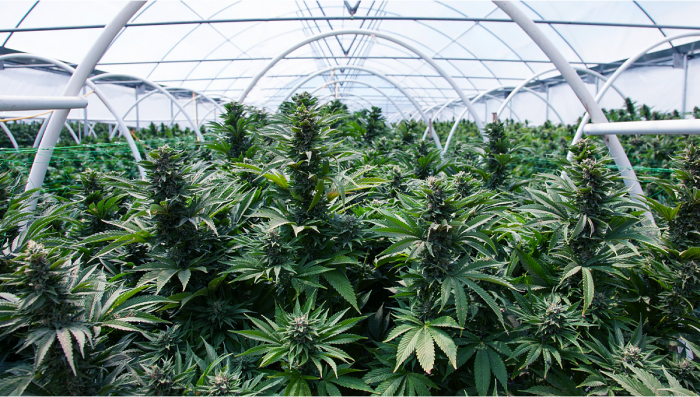








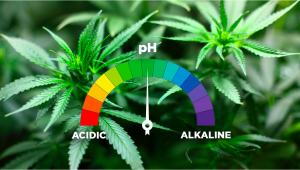
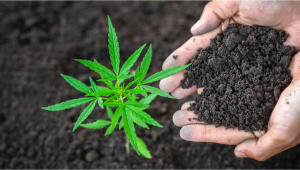
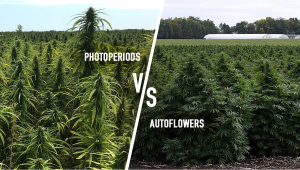
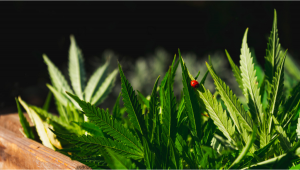
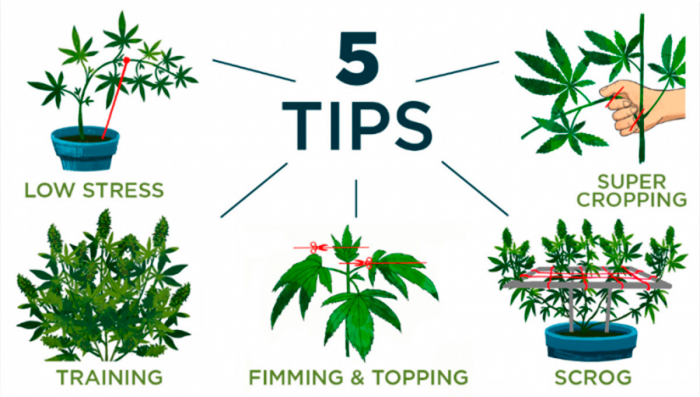

Comments